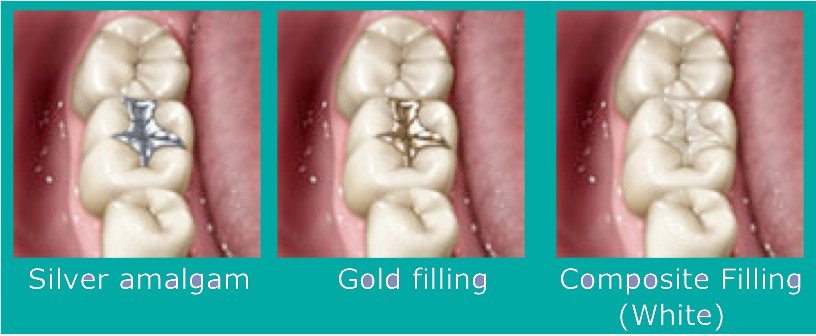What is a filling?
A filling is a way to restore a tooth damaged by decay or chipping back to its normal function and shape. When a dentist gives you a filling, he or she first removes the decayed tooth material, cleans the affected area, and then fills the cleaned out cavity with a filling material. By closing off spaces where bacteria can enter, a filling also helps prevent further decay.
Although silver fillings are common, they are not the only type to fill a dental cavity. There are other options out there for you to consider.
Here is the list of different types of fillings:
- Silver amalgam – It is the most widely known dental filling material. This Amalgam is made up of a mixture of silver, tin, zinc, copper, and mercury. The popularity of amalgam among dentists is due in part to its low cost as well as its strength and durability.
- Composite fillings – They are very popular because of the tooth-colored appearance that can be matched to the shade of your existing teeth. Composite fillings are made of a resin/plastic material or so that is placed and cured with a UV light.
- Ceramic fillings – They are made of porcelain and are both durable as well as aesthetically pleasing. The material is more expensive than the other filling materials, but ceramics are tooth-colored and more resistant to staining and abrasion than composite resin. The disadvantage of using ceramic is that it is more brittle than its composite counter-part and it needs to be large enough to prevent it from breaking.
- Glass ionomers – They are made of glass and acrylic and typically last less than 5 years. They are a good choice for children whose teeth are still changing. Glass ionomers release fluoride, which can help protect the tooth from further decay. The disadvantages of glass ionomer fillings are they are significantly weaker than composite resin and much more likely to wear or fracture. Traditional glass ionomer does not match your tooth color as precisely as composite resin.
- Gold fillings – They are not as commonly used and are an expensive alternative but the gold material is sturdy and non-corrosive. Although having the gold filling placed is not convenient (it takes more than 1 office visit to fit them properly), it can be very durable.
Visit the dental clinic in Calgary to find out which type of filling is best for you. Depending on the location and extent of the decay, cost of filling material and your insurance coverage, your dentist will assist you in determining the type of filling.

